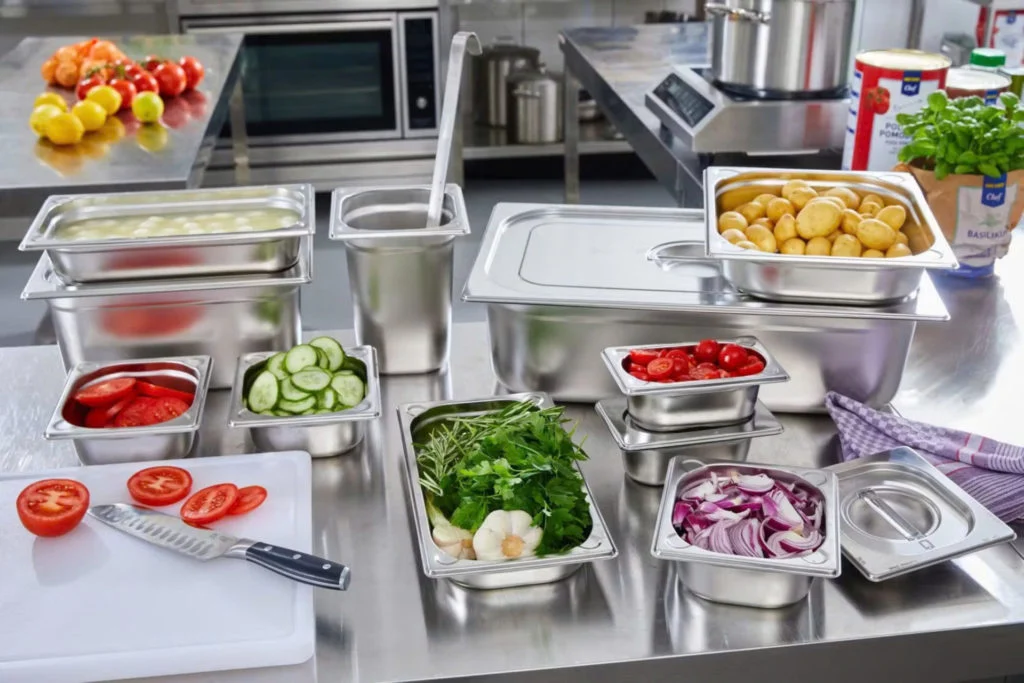The kitchen is often the heart of the home, but it’s also one of the most energy-intensive areas. Adopting sustainable practices in your kitchen can significantly reduce your environmental footprint while saving money. Creating an eco-friendly kitchen doesn’t have to involve major renovations; small, intentional changes can make a big difference.
Choose Energy-Efficient Appliances
One of the most impactful ways to make your kitchen sustainable is by upgrading to energy-efficient appliances. Look for models with an ENERGY STAR rating, which consume less power and water compared to standard appliances. For example:
- Refrigerators with advanced cooling systems maintain optimal temperature with minimal energy use.
- Induction stoves heat up quickly and efficiently, reducing cooking times.
- Dishwashers with eco-settings use less water per cycle while cleaning effectively.
Opt for Sustainable Materials
When renovating or upgrading, prioritize sustainable materials for your kitchen surfaces and furniture. Options include:
- Recycled Materials: Countertops made from recycled glass or aluminum are durable and eco-friendly.
- Bamboo and Cork: These fast-growing renewable resources make excellent choices for flooring and cabinetry.
- Salvaged Wood: Gives a rustic look while reducing the demand for new lumber.
Reduce Single-Use Plastics
Single-use plastics are a significant source of waste in kitchens. Transition to reusable alternatives like:
- Glass or stainless steel food storage containers instead of plastic ones.
- Beeswax wraps to replace cling film for covering food.
- Reusable grocery bags and produce sacks for shopping.
Minimize Food Waste
Reducing food waste is an essential aspect of sustainability. Simple strategies to prevent waste include:
- Meal Planning: Plan meals for the week to buy only what you need.
- Proper Storage: Store fruits, vegetables, and leftovers correctly to extend their shelf life.
- Composting: Turn food scraps into nutrient-rich compost for your garden instead of throwing them away.
Invest in Water-Saving Fixtures
Conserving water is a critical part of creating an eco-friendly kitchen. Install water-saving fixtures, such as low-flow faucets or touchless taps, which reduce water waste. Additionally:
- Avoid running the tap unnecessarily while washing dishes.
- Use a dishwasher for full loads instead of handwashing for better water efficiency.
Use Eco-Friendly Cleaning Products
Many commercial cleaning products contain harsh chemicals that harm the environment. Switch to eco-friendly alternatives like:
- Vinegar and baking soda for general cleaning.
- Biodegradable dishwashing liquids with plant-based ingredients.
- Microfiber cloths that clean effectively without requiring chemical sprays.
Embrace Energy-Saving Habits
Changing habits can make your kitchen more energy-efficient. Simple practices include:
- Turning off appliances like microwaves and coffee makers when not in use.
- Using lids on pots to cook food faster.
- Letting leftovers cool before placing them in the refrigerator to reduce the appliance’s workload.
Light Up Sustainably
Switch to LED bulbs for your kitchen lighting. They use up to 80% less energy than incandescent bulbs and last much longer. Maximize natural light during the day to cut down on electricity use, and install dimmers for better control over energy consumption.
Buy Local and Organic
Sourcing local and organic produce reduces the carbon footprint associated with transportation and farming practices. Shop at farmers’ markets or join a community-supported agriculture (CSA) program. Prioritize:
- Seasonal fruits and vegetables.
- Free-range or grass-fed meats if you consume animal products.
- Bulk dry goods to reduce packaging waste.
Consider a Kitchen Herb Garden
Growing your own herbs is an easy way to make your kitchen eco-friendly. A small indoor herb garden requires minimal space and provides fresh, pesticide-free ingredients for your meals. Popular options include basil, mint, parsley, and thyme.
Recycle and Upcycle
Set up a recycling station in your kitchen to sort paper, plastic, glass, and metal. Look for opportunities to upcycle items:
- Use glass jars for storage or as planters.
- Repurpose old cutting boards as decorative serving trays.
- Turn empty cans into utensil holders.
Cook More, Order Less
Cooking at home reduces reliance on takeout, which often comes with excessive packaging. Preparing meals at home allows you to:
- Use fresh, local ingredients.
- Avoid single-use plastics and Styrofoam containers.
- Control portion sizes, minimizing leftovers and waste.
Install a Compost Bin
If space permits, consider installing a small compost bin in your kitchen. Composting food scraps reduces landfill waste and produces a valuable resource for gardening. Compostable items include fruit peels, coffee grounds, eggshells, and even used tea bags.
Make Sustainability a Family Effort
Encourage family members to participate in creating a sustainable kitchen. Assign tasks like sorting recyclables, managing compost, or conserving energy. Making it a group effort ensures long-term commitment and fosters environmental responsibility.
The Benefits of a Sustainable Kitchen
Transitioning to a sustainable and eco-friendly kitchen offers several benefits:
- Lower Bills: Energy-efficient appliances and water-saving habits can significantly cut utility costs.
- Healthier Living: Eco-friendly products and practices reduce exposure to harmful chemicals.
- Positive Environmental Impact: Conserving resources and reducing waste helps combat climate change and protect ecosystems.
Creating a sustainable kitchen doesn’t require dramatic changes all at once. By gradually adopting these eco-friendly practices and products, you can enjoy a greener lifestyle that benefits both your household and the planet.


